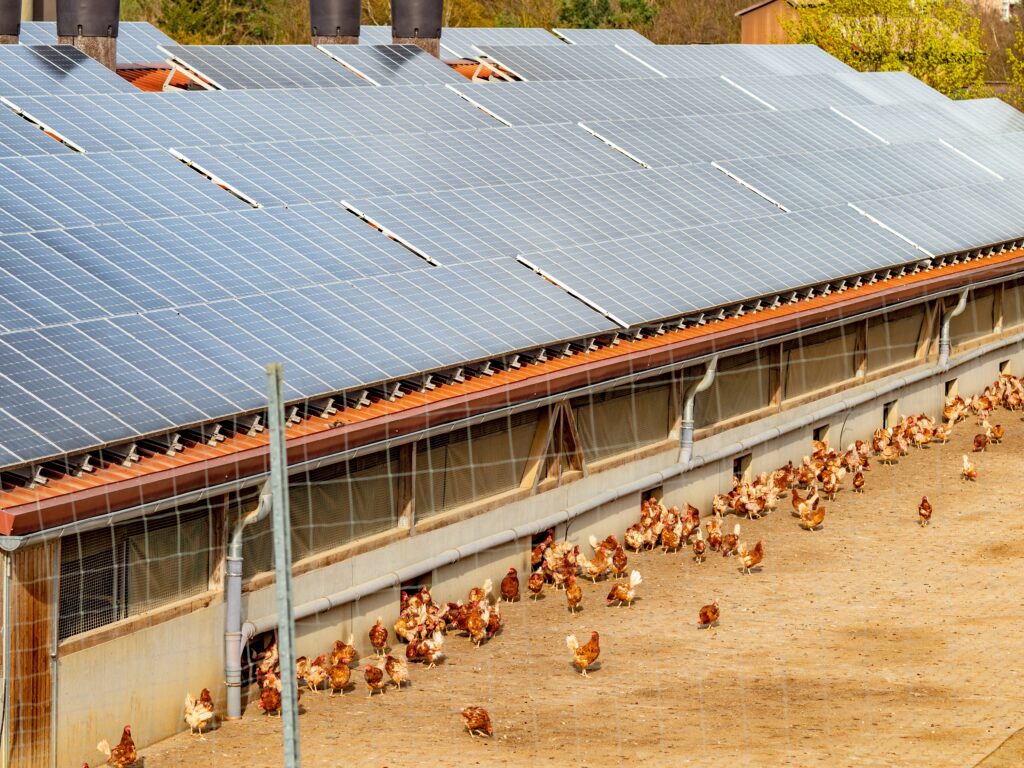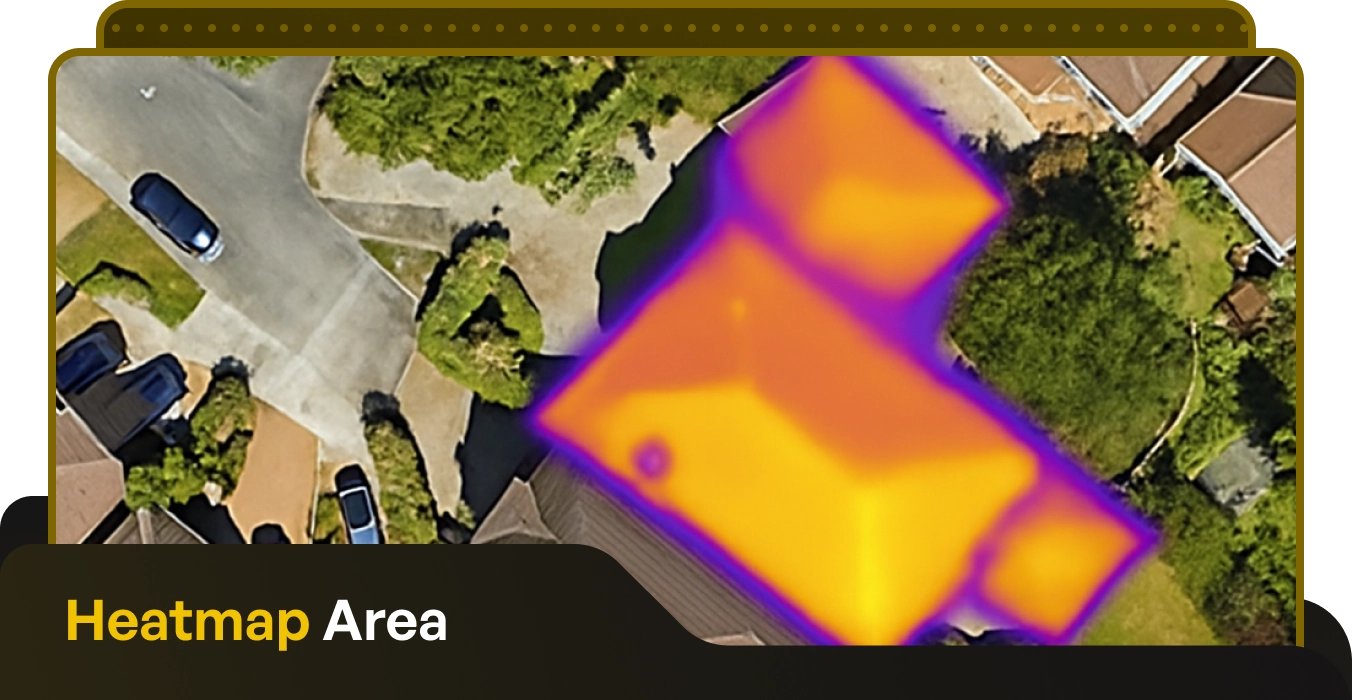Table of Contents
Solar Panel Grants for Farmers

Written by: Briain Kelly
Published: July 26, 2025
Last updated: November 10, 2025
Reading time: 5 mins
One of the best ways to reduce the cost of solar panels is with grant funding that is paid directly for solar PV installations.
Farms in Ireland can use a great deal of electricity, which is why the Department of Agriculture provides generous grant aid for farmers considering investing in solar panels.
What is the main solar grant for farmers?
The Solar Capital Investment Scheme is a solar grant programme aimed specifically at farmers under the Targeted Agriculture Modernisation Schemes (TAMS 3).
This scheme provides funding for farmers to install solar panels on their farms for the express purpose of using that solar electricity to reduce their energy needs.
How much is the solar grant for farms worth?
The Solar Capital Investment Scheme awards grant funding of up to 60% of the total cost of solar PV projects.
There is a maximum ceiling for the grant of €90,000, meaning that the most funding you can receive is €54,000. Anything over that €90k limit won’t be considered for grant funding.
This grant of up to 60% of the investment cost, capped at €90,000, applies per land holding. Multiple grants can be received for different land holdings.
The value of the grant awarded to you will be based on one of three possible calculations.
- The Department’s Reference Costings as of the date of approval.
- The total of the eligible invoices marked “paid”, net of VAT, together with the costs of the applicant’s own contribution in terms of labour and machinery.
- The cost of the investment proposed by the applicant as indicated on their grant application.
The lowest of these three figures is likely to be selected when calculating the level of grant aid farmers receive.
Eligibility Criteria for the Solar Capital Investment Scheme
There are a number of criteria that the applicant, their land, and the solar PV system in question must meet in order to qualify for this grant scheme.
To start with, the project must involve a minimum investment of €2,000 to qualify. This shouldn’t be a problem for any solar PV scheme.
Land Eligibility
- The application must own, lease, or rent a land holding of at least five hectares in size.
- The applicant’s land must have been declared under the Basic Payment Scheme (BPS) and the Basic Income Support for Sustainability (BISS) or equivalent in the year of application or the preceding year.
- Land that part of a dwelling, associated buildings or amenity space is not eligible. Neither is land used for commercial forestry, quarries, or gravel pits, or is permanently underwater.
- If a land holding has been determined to have been artificially created to maximise benefits from the scheme, then the application may be rejected.
General Eligibility
- The applicant must either be applying for their own land, or be an approved person for a legally qualifying ene
- 100% of the power generated by the solar PV system must be for self-consumption on the farm (including private dwelling).
- The maximum system size which is eligible for grant aid is 62kWp. More solar panels can be installed, but they will not be considered for grant funding.
Applying for the Solar Capital Investment Scheme
Applications to the solar panel grant scheme for farmers must be made online, with postal or email applications not accepted.
In order to apply, people must be registered with the Department of Agriculture for online services. The grant application is made through that same portal.
If a grant application is unsuccessful in one tranche, then it will automatically be rolled over to the next one.
If it fails to be approved a second time, then the grant application will revert to a draft state.
The closing date for applications to the next tranche of funding for solar grants is December 5, 2025.
The government has said that the Solar Capital Investment Scheme will continue until December 2027.

Supporting Documents for a Grant Application
The following documents are required to be submitted alongside the grant application.
- On Farm Solar PV Survey, including supporting electricity bills;
- Copies of drawings and the farm structure layout plan
- Farmyard layout plan.
- A site location map identifying the location for the proposed investment;
- Ownership documents to a scale not greater than 1:5,000 or a BPS/BISS Application Map, together with LPIS numbers identifying the relevant land parcels.
- A copy of a company’s Companies Registration Office Certificate and Memorandum and Articles of Association or one document constitution.
- Grant of full and final planning permission, including conditions or declaration of exemption with maps, where applicable.
- A copy of any appropriate Environmental Impact Assessment undertaken as part of the planning process, where applicable.
- Copies of drawings on which planning permission or declaration of exemption, including maps, was obtained.
- In certain cases, an engineer’s report.
- Evidence of leasehold title (copy of valid lease including maps) for each site.
Plans and drawings with the site location must include an Eircode or GPS reference.
Applications which are not uploaded with all of the documents above will likely be rejected. So it’s better to save some effort and get it right the first time.
The Farmyard Layout Plan listed above must include the following details:
- Name and address of the applicant
- Address of the fixed investment (if different from above)
- TAMS 3 number or Herd Number
- All existing and proposed structures, including the investment identifier used on TAMS 3
computer system - All agitation points
- Directional arrow
- Roads/laneways
- Rivers /streams/drains (if relevant)
- All features/structures existing and proposed must be clearly marked and labelled on the plan
Solar PV System Requirements
In order to receive the solar grant, farmers must ensure that their solar PV system adheres to requirements set out by the department.
Many of these are the same as for any solar panel system, but there are also specific requirements for farmers.
Panel Spacing: No more than three panels may be installed next to one another without a gap. After three panels, a gap of at least 50mm must be left before the next panel.
Ground-Mounting: If solar panels are mounted on the ground, there must be a gap of at least 300mm between the ground and the bottom of the solar panel. Ground mounted panels must also be within 500m of the farmyard.
Farm Buildings: If there is a garage building separate from the farmyard, then solar panels may not be installed on it, but must instead go on a farmyard building. Panels may also not be installed on the dwelling house.
Solar Batteries: Battery storage is eligible for grant funding. The maximum eligible battery size is 50% of the solar PV system output (kWp).
The solar panels should not be installed until a letter of approval for the grant is issued. Otherwise, the costs will not be eligible for grant funding.
How are grant applications assessed?
Applications to the Solar Capital Investment Scheme are assessed and prioritised based on a number of factors.
- The age of the applicant (younger farmers receive priority)
- The size of the holding
- Any part of a holding in an Area of Natural Constraint
- Payment under TAMS II Dairy Equipment Scheme, Tillage Capital Investment Scheme, Young Farmer Capital Investment Scheme, Organic Capital Investment Scheme, Pig and Poultry Investment Scheme, Animal Welfare, Safety and Nutrient Storage Scheme.
- Nitrates Production Prior to Export
Receiving the Grant Payment
The farmer can submit a claim for payment of the grant after the solar installation works have been completed.
The claim for payment can only be made online. Only one payment will be made, with part payments not allowed.
The solar panels must be installed, and the payment claim made, within 12 months of the applicant receiving approval, unless they have received an extension.
If you submit a claim for payment after the due date, the grant aid will be reduced by 1% for every week over the deadline, up to a maximum of 14 weeks.
Claims received after the 14th week will result in rejection of the payment claim and zero payment.
FAQs
If your grant application is rejected, that decision can be appealed to the Agriculture Appeals Office. This must be done in writing within three months of the decision.
Planning permission is not needed to install solar panels on any farm building. Ground-mounted solar panels are also exempt from planning up to an area of 75m².
Solar Panel Grants for Farmers
Published: July 26, 2025
Last updated: November 10, 2025

Written by: Briain Kelly
Reading time: 5mins
One of the best ways to reduce the cost of solar panels is with grant funding that is paid directly for solar PV installations.
Farms in Ireland can use a great deal of electricity, which is why the Department of Agriculture provides generous grant aid for farmers considering investing in solar panels.
What is the main solar grant for farmers?
The Solar Capital Investment Scheme is a solar grant programme aimed specifically at farmers under the Targeted Agriculture Modernisation Schemes (TAMS 3).
This scheme provides funding for farmers to install solar panels on their farms for the express purpose of using that solar electricity to reduce their energy needs.
How much is the solar grant for farms worth?
The Solar Capital Investment Scheme awards grant funding of up to 60% of the total cost of solar PV projects.
There is a maximum ceiling for the grant of €90,000, meaning that the most funding you can receive is €54,000. Anything over that €90k limit won’t be considered for grant funding.
This grant of up to 60% of the investment cost, capped at €90,000, applies per land holding. Multiple grants can be received for different land holdings.
The value of the grant awarded to you will be based on one of three possible calculations.
- The Department’s Reference Costings as of the date of approval.
- The total of the eligible invoices marked “paid”, net of VAT, together with the costs of the applicant’s own contribution in terms of labour and machinery.
- The cost of the investment proposed by the applicant as indicated on their grant application.
The lowest of these three figures is likely to be selected when calculating the level of grant aid farmers receive.
Eligibility Criteria for the Solar Capital Investment Scheme
There are a number of criteria that the applicant, their land, and the solar PV system in question must meet in order to qualify for this grant scheme.
To start with, the project must involve a minimum investment of €2,000 to qualify. This shouldn’t be a problem for any solar PV scheme.
Land Eligibility
- The application must own, lease, or rent a land holding of at least five hectares in size.
- The applicant’s land must have been declared under the Basic Payment Scheme (BPS) and the Basic Income Support for Sustainability (BISS) or equivalent in the year of application or the preceding year.
- Land that part of a dwelling, associated buildings or amenity space is not eligible. Neither is land used for commercial forestry, quarries, or gravel pits, or is permanently underwater.
- If a land holding has been determined to have been artificially created to maximise benefits from the scheme, then the application may be rejected.
General Eligibility
- The applicant must either be applying for their own land, or be an approved person for a legally qualifying ene
- 100% of the power generated by the solar PV system must be for self-consumption on the farm (including private dwelling).
- The maximum system size which is eligible for grant aid is 62kWp. More solar panels can be installed, but they will not be considered for grant funding.
Applying for the Solar Capital Investment Scheme
Applications to the solar panel grant scheme for farmers must be made online, with postal or email applications not accepted.
In order to apply, people must be registered with the Department of Agriculture for online services. The grant application is made through that same portal.
If a grant application is unsuccessful in one tranche, then it will automatically be rolled over to the next one.
If it fails to be approved a second time, then the grant application will revert to a draft state.
The closing date for applications to the next tranche of funding for solar grants is December 5, 2025.
The government has said that the Solar Capital Investment Scheme will continue until December 2027.

Supporting Documents for a Grant Application
The following documents are required to be submitted alongside the grant application.
- On Farm Solar PV Survey, including supporting electricity bills;
- Copies of drawings and the farm structure layout plan
- Farmyard layout plan.
- A site location map identifying the location for the proposed investment;
- Ownership documents to a scale not greater than 1:5,000 or a BPS/BISS Application Map, together with LPIS numbers identifying the relevant land parcels.
- A copy of a company’s Companies Registration Office Certificate and Memorandum and Articles of Association or one document constitution.
- Grant of full and final planning permission, including conditions or declaration of exemption with maps, where applicable.
- A copy of any appropriate Environmental Impact Assessment undertaken as part of the planning process, where applicable.
- Copies of drawings on which planning permission or declaration of exemption, including maps, was obtained.
- In certain cases, an engineer’s report.
- Evidence of leasehold title (copy of valid lease including maps) for each site.
Plans and drawings with the site location must include an Eircode or GPS reference.
Applications which are not uploaded with all of the documents above will likely be rejected. So it’s better to save some effort and get it right the first time.
The Farmyard Layout Plan listed above must include the following details:
- Name and address of the applicant
- Address of the fixed investment (if different from above)
- TAMS 3 number or Herd Number
- All existing and proposed structures, including the investment identifier used on TAMS 3
computer system - All agitation points
- Directional arrow
- Roads/laneways
- Rivers /streams/drains (if relevant)
- All features/structures existing and proposed must be clearly marked and labelled on the plan
Solar PV System Requirements
In order to receive the solar grant, farmers must ensure that their solar PV system adheres to requirements set out by the department.
Many of these are the same as for any solar panel system, but there are also specific requirements for farmers.
Panel Spacing: No more than three panels may be installed next to one another without a gap. After three panels, a gap of at least 50mm must be left before the next panel.
Ground-Mounting: If solar panels are mounted on the ground, there must be a gap of at least 300mm between the ground and the bottom of the solar panel. Ground mounted panels must also be within 500m of the farmyard.
Farm Buildings: If there is a garage building separate from the farmyard, then solar panels may not be installed on it, but must instead go on a farmyard building. Panels may also not be installed on the dwelling house.
Solar Batteries: Battery storage is eligible for grant funding. The maximum eligible battery size is 50% of the solar PV system output (kWp).
The solar panels should not be installed until a letter of approval for the grant is issued. Otherwise, the costs will not be eligible for grant funding.
How are grant applications assessed?
Applications to the Solar Capital Investment Scheme are assessed and prioritised based on a number of factors.
- The age of the applicant (younger farmers receive priority)
- The size of the holding
- Any part of a holding in an Area of Natural Constraint
- Payment under TAMS II Dairy Equipment Scheme, Tillage Capital Investment Scheme, Young Farmer Capital Investment Scheme, Organic Capital Investment Scheme, Pig and Poultry Investment Scheme, Animal Welfare, Safety and Nutrient Storage Scheme.
- Nitrates Production Prior to Export
Receiving the Grant Payment
The farmer can submit a claim for payment of the grant after the solar installation works have been completed.
The claim for payment can only be made online. Only one payment will be made, with part payments not allowed.
The solar panels must be installed, and the payment claim made, within 12 months of the applicant receiving approval, unless they have received an extension.
If you submit a claim for payment after the due date, the grant aid will be reduced by 1% for every week over the deadline, up to a maximum of 14 weeks.
Claims received after the 14th week will result in rejection of the payment claim and zero payment.
FAQs
If your grant application is rejected, that decision can be appealed to the Agriculture Appeals Office. This must be done in writing within three months of the decision.
Planning permission is not needed to install solar panels on any farm building. Ground-mounted solar panels are also exempt from planning up to an area of 75m².
Solar Energy Saves Households Thousands in Electricity Costs
Take our 2-minute questionnaire and find affordable solar options to suit your budget and lifestyle.



